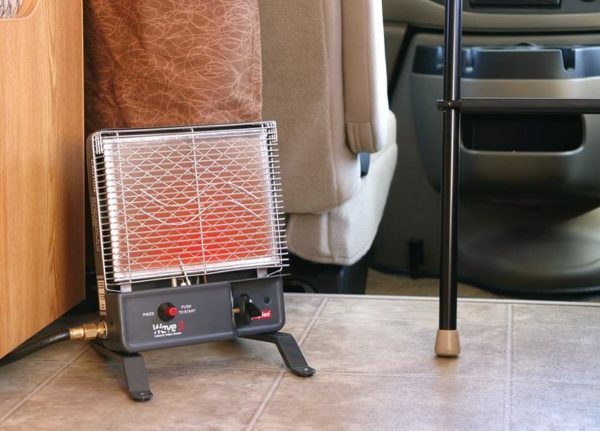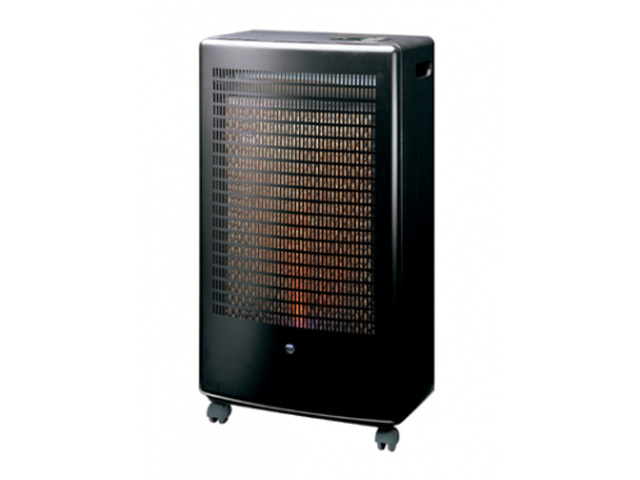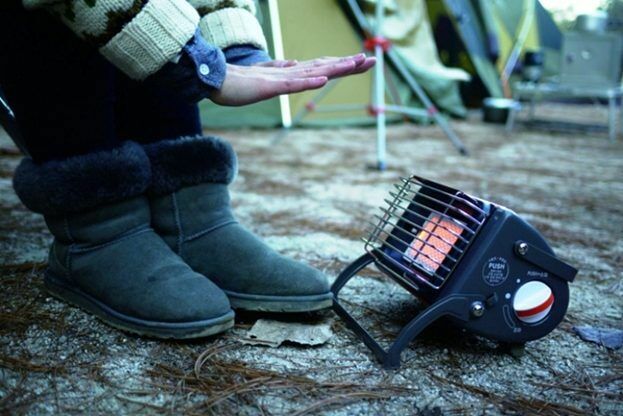
bigl.ua
Each type of heating equipment has its advantages and disadvantages. Our goal is to tell about each of the formats so that the buyer can make the right decision for himself and equip his home with the most productive system for him. This article will focus on a catalytic heater - a very new type of heating, which is gaining popularity both in Europe and in our country.
The content of the article
- What is a catalytic heater
- Catalytic heater: gas, petrol or multi-fuel?
- Gasoline infrared or conventional heater
- Pros and cons of a catalytic heater
- How to choose a burner
- Specifications
What is a catalytic heater
In this section, we will focus on a device that creates heat based on a chemical oxidation reaction. For this purpose, there is a special catalyst in the housing, on which fuel enters and heat is generated.
A furnace with a catalyst consumes fuel without a flame. As a result, no combustion products are emitted into the atmosphere - an absolutely environmentally friendly production. In terms of efficiency, the catalytic stove is in many ways superior to gas burners.
Such a procedure for the decomposition of fuel with the release of heat is carried out according to the following scheme:
- The catalyst plate is heated to high temperatures (from 200 to 500 degrees).
- Fuel together with oxygen is heated in a separate chamber.
- Fuel vapors fall on a hot catalyst.
- Under the influence of huge temperatures and a hot surface, the flameless dissolution of steam and the removal of heat to the outside occur.
That is, the catalytic heater works on the principle of oxidation of combustion products.
Gasoline or gas falls on a heated catalytic plate and "burns out" without the flame itself. Since he does not need large volumes of the apparatus, even in the smallest heat is produced many times more than standard systems. For example, an average-priced gasoline heater is able to maintain the temperature in a room up to 25 square meters.
The average shelf life of a plate is 5-7 years, after which it can be freely replaced on its own or taken to a service center. After that, your catalytic furnace will serve for a very long time.
Catalytic heater: gas, petrol or multi-fuel?

gsukr.com.ua
There are several formats of heaters, which differ both in technical characteristics and in the possibility of using a certain type of combustible elements. Let's analyze each option in more detail:
- Gas catalytic burners - devices operating on the basis of liquefied gas. For example, you can also use a propane-butane mixture. Actively found their application for heating cottages or garages. More powerful models have shown themselves well in construction or in workshops where there is no central heating supply. Since the gas is burned in the furnace in a flameless manner, no harmful combustible substances enter the air. The average area of a heated room with a catalytic gas heater is 20 square meters. The maximum power of the device is 5 kW.
- Catalytic gasoline heater - for burning this type of fuel there is a separate tank connected to the catalyst. Preheated vapors fall to the surface, where they generate heat. They differ in their small size, which is why they are so fond of hunters and fishermen, tourists and athletes who are actively in contact with a cold environment for a long time.
- Some models of heaters on gasoline have the function of cooking, as on a standard stove - for this, a small hob is installed separately. No worse than my wife's in the kitchen!
- Systems running on dry fuel or alcohol tablets are small devices, more suitable for extreme conditions. The heat is enough to warm your hands, dry your clothes and boots, and then move on.
Tourist burners weigh about one and a half kilograms. The body has separate compartments for storing dry fuel tablets - you can put a couple and not carry a box of fuel washers with you. It is especially convenient when there is no place in the backpack anyway, but you still need to put a lot of things.
Gasoline infrared or conventional heater
The peculiarity of infrared systems is that they have many ceramic panels that serve as heat reflectors. This allows the heat beam to be concentrated on a local scale.
The model works productively both indoors and outdoors. The main models in the infrared equipment segment consume gas.
Household devices on liquid fuel or gas, but without an IR system, are no less in demand. Such devices differ in size: you can find both a hiking option and a full-fledged boiler.
The principle of operation is no different from that described earlier. Therefore, for greater heat dissipation throughout the room, a powerful thermal cooler is always built into the case.
The peculiarity of wall-mounted gas catalytic stoves is that they have sensors for adjusting gas leakage and automatically turn off when the system breaks down.
In conclusion, we will describe the main difference between these models: infrared - not recommended for heating a small enclosed space, fits into a production room; household - ideal for home conditions, work in the garage, a small room.
Pros and cons of a catalytic heater

gsukr.com.ua
The following characteristics can and should be attributed to the undoubted positive qualities of the equipment:
- Small weight and dimensions - if desired, you can find a model for home, active tourism or transportation in a car, for example, to the country.
- Lots of security settings - since there is no flame inside, the risk of fires is reduced to zero. Also, no harmful emissions into the atmosphere - everything is environmentally friendly. Another feature of catalytic gas heaters, and indeed any other heaters, is carbon dioxide monitoring sensors in the environment.
- Fuel economy. For example, gas devices process only 200 g of fuel in a few hours of tireless work.
- A new cylinder or several liters of gasoline can be bought freely.
- There may be no combustion products at all. The air remains clean and pleasant.
- The whole structure is assembled on the basis of simple parts and mechanisms. If you wish, you can independently understand the system and fix the catalytic heater with your own hands.
The main disadvantage is the high price of the equipment, especially the extremely powerful one. But what to do: you always have to pay for high-quality equipment. Or be without it.
Catalytic systems have densely occupied a niche among heating means - and this is a clear fact.
How to choose a burner
If you plan to use the device exclusively as a camping or fishing heater, feel free to look for small-sized models that will give enough heat and save you in a critical situation. Do not count on high power, as we sacrifice it in minus weight and size.
For domestic needs, take overall models - they have a powerful catalyst, a heat fan and consume fuel economically. Also, fuses are always provided in such devices to leave equipment unattended. For transportation, you can find an option with a chassis or additionally buy a construction trolley.
Specifications
The first and most important thing that is valued in burners is their power. The instructions always prescribe the maximum heating area - focus on it. It will also not be superfluous to study other technical components, including:
- Fuel consumption. Pay attention to how much gasoline or gas the boiler spends, focus on a more economical option.
- Dimensions. In order for the boiler to fit in the room, measure the height, width and length of the desired area in advance, and only then select the catalytic heater. Also, do not forget about the safe distance - at least one and a half meters from other equipment.
- For movement, select options that are light in weight. There will always be a case to move the device to another place, and no one wants to get a hernia.
Also check the package. All parts must organically contact within the heater. The gearbox and fuel hose/cylinder are always included. If there are difficulties in installation, you can always buy a couple of adapters.


